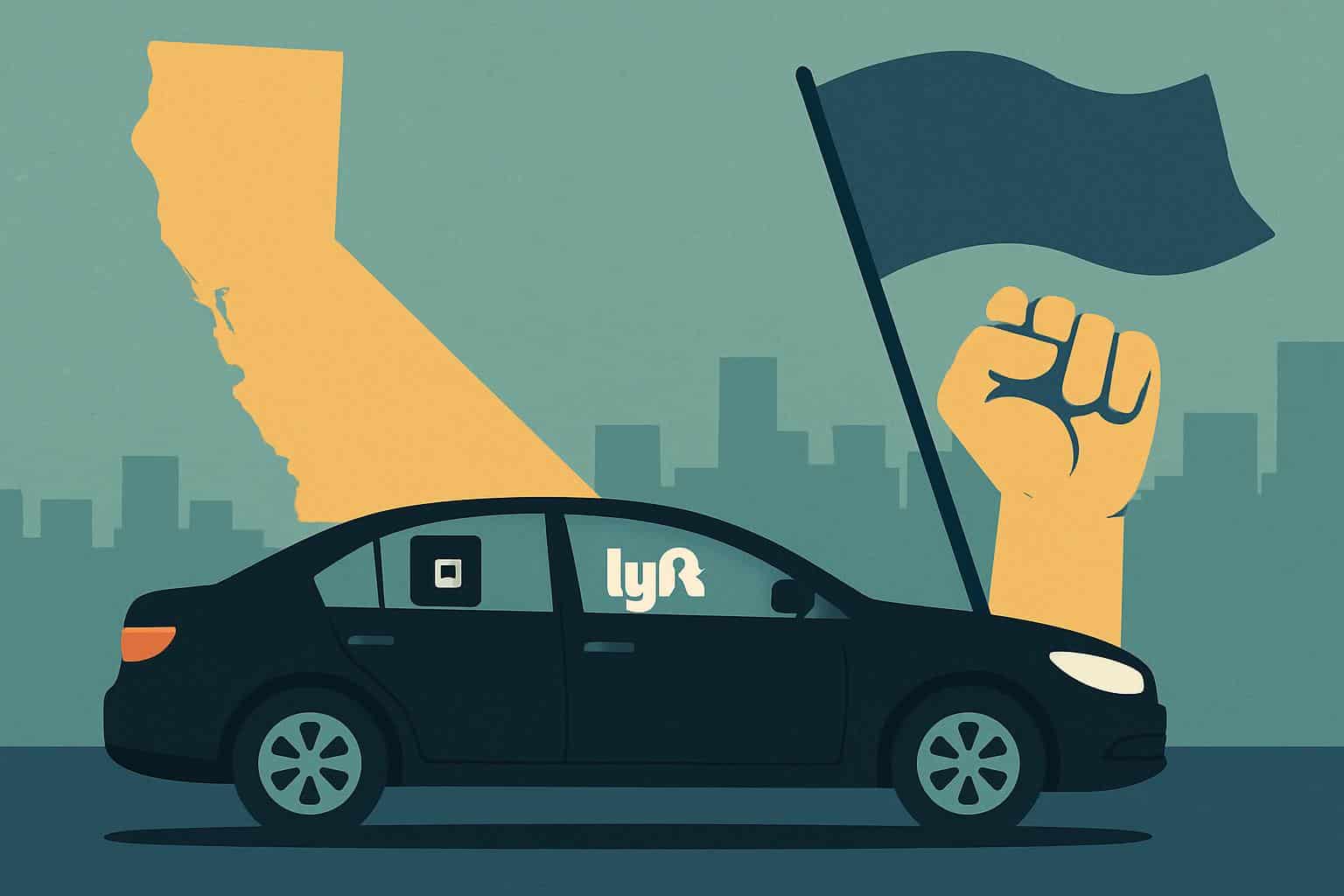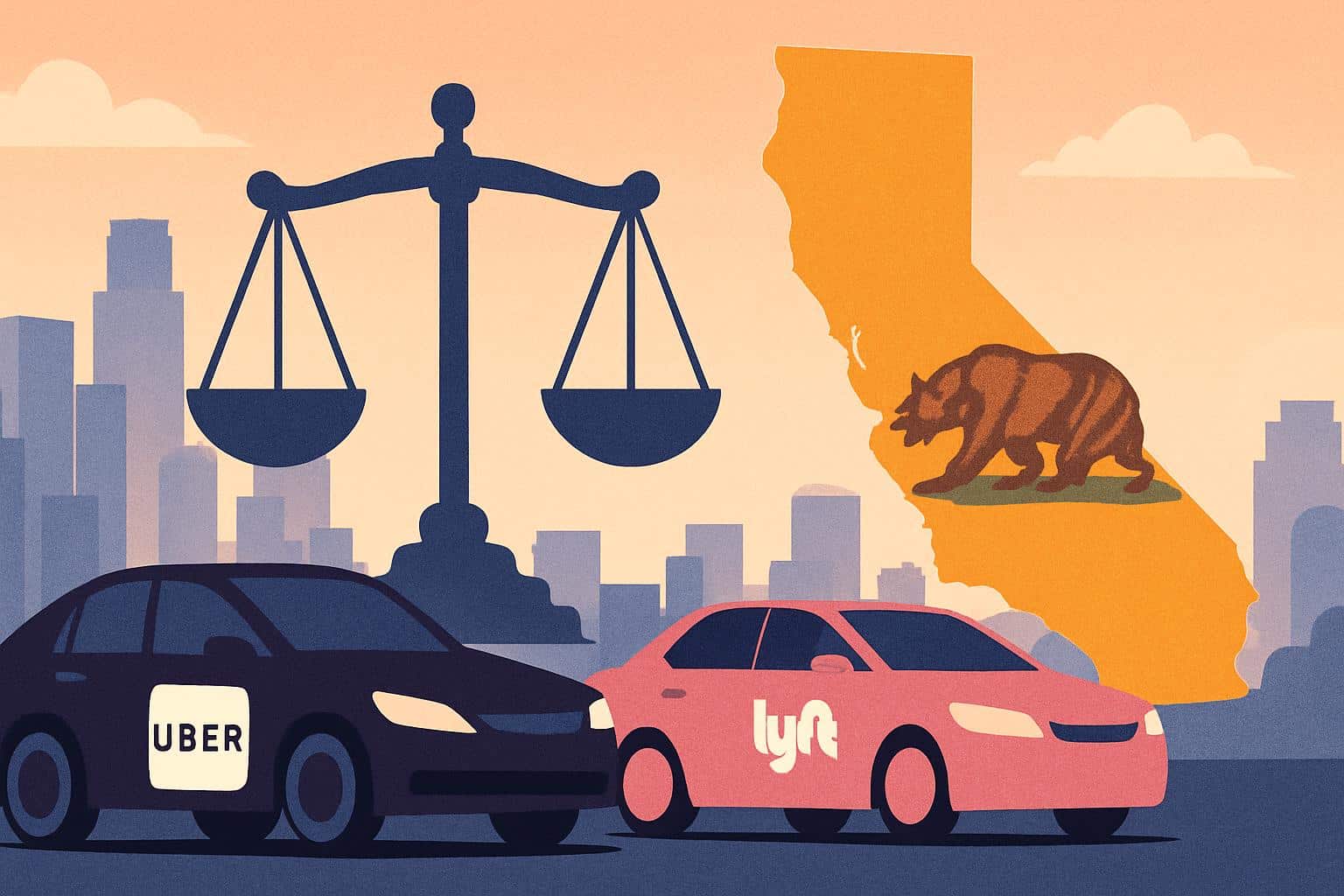California paves the road for Uber and Lyft drivers to organize, in a milestone shift for the state’s gig economy that leaves workers as independent contractors while offering them bargaining rights. Under the new framework, set up under Assembly Bill 1340, ride-hailing giants must bargain in good faith with a certified driver organization, affecting more than 800,000 drivers statewide, according to numbers provided by AP News.
What California’s new bargaining law actually does
AB 1340 carves a state-supervised process for drivers to select a representative to bargain over pay standards, deactivation policies, dispute resolution, and safety protocols. Drivers are still classified as independent contractors under Proposition 22, the ballot initiative that created an alternative pay floor based on “engaged time” and some benefits but stopped short of true employee status.
- What California’s new bargaining law actually does
- Why this move matters for California’s gig workers
- Pay, wait time, and closing gaps left by Prop 22
- Reactions from Uber, labor groups, and California drivers
- What consumers and safety advocates say will happen
- What comes next in California’s driver bargaining plan

The bill is aimed at rideshare operators, so delivery workers for DoorDash and Instacart are not covered. A related measure, SB 371, reduces the minimum insurance coverage requirements for uninsured or underinsured motorist collisions from $1 million to $60,000 per individual and $300,000 per accident — changes that some industry groups say could help lower costs; trial lawyers and safety advocates argue it could leave severely injured victims insufficiently covered after a severe crash.
Why this move matters for California’s gig workers
Since the National Labor Relations Act does not cover contractors, app-based drivers have been largely blocked from traditional unionization paths. California’s approach establishes a state-backed collective bargaining channel that legal scholars say could be eligible for antitrust immunity under the state action doctrine if it were actively supervised by the state — an important guardrail, given that past local efforts like Seattle’s hit a wall of legal headwinds.
It’s also part of a larger national trend. Massachusetts earlier this year approved a system that provided ride-hail drivers organizing rights in exchange for what amounts to a state-set guaranteed hourly floor and company-paid benefits. Washington state established a Driver Resource Center and minimum pay standards, and lawmakers in Minnesota and Illinois have also considered proposals that would formalize bargaining rights or set higher pay floors.
Pay, wait time, and closing gaps left by Prop 22
Central to the issue is whether bargaining can lead to more compensation for time that drivers are logged in but waiting for a passenger, or waiting in their vehicles, as some outlets have reported is common practice with ride-hailing services. Prop 22’s earnings guarantee applies only to engaged time, however, and drivers spend a significant percentage of their working time waiting for or repositioning without pay, according to several academic studies — including research cited by the UC Berkeley Labor Center and the Economic Policy Institute. That, and gaps in pay for fuel, maintenance, and vehicle depreciation, often drive down net earnings to below local minimum wages.
Collective bargaining could get at these pain points directly, through higher per-mile and per-minute rates, compensation for unpaid time, a transparent surge policy, and a standardized way to appeal deactivations. Drivers also identify practical wins — like reliable access to restroom facilities in airports and stronger in-app safety supports — frequently negotiated by unions in other industries.

Reactions from Uber, labor groups, and California drivers
Uber’s California public policy lead, Ramona Prieto, praised AB 1340 and SB 371 as a compromise that boosts driver voices while maintaining affordable rides, in an email to AP News. Big labor organizations, including the Teamsters and Service Employees International Union, are expected to be vying to represent drivers, as are independent groups like Rideshare Drivers United.
Drivers’ advocates say the job is only half done. Rideshare Drivers United, which represents tens of thousands of Southern California drivers, maintains that state oversight would still be necessary to certify whether any potential wage deal does in fact put more money into drivers’ pockets. “Union power is only as useful as it is enforceable, and strong enforcement will ensure that whatever wins the union can win at the bargaining table are meaningful, especially when it comes to pay transparency and deactivation fairness,” President Nicole Moore said.
What consumers and safety advocates say will happen
Supporters of the insurance changes in SB 371 say lower coverage requirements are expected to address cost pressures that they say drive up fares — particularly at off-peak times. Opponents contend that the change could instead transfer risk to drivers and passengers who are injured in catastrophic crashes. How the new thresholds will interact with personal policies and Prop 22’s occupational accident coverage will be scrutinized by the state’s Insurance Department and consumer attorneys.
The call to haggle also comes as earnings claims are getting more attention. It follows an action in New York City — where investors were also the plaintiffs — which culminated in Lyft agreeing to a $2.1 million settlement with federal regulators over charges it exaggerated how much drivers would earn, with the Federal Trade Commission saying its advertising inflated earnings figures by as much as 30 percent. That episode highlights an enduring information asymmetry that collective bargaining could help remedy by establishing standard, verifiable pay reporting.
What comes next in California’s driver bargaining plan
It will depend on how the state will certify a driver organization, hold elections, and oversee negotiations. Think: eligibility rules for voter rolls, thresholds needed to win representation, and time frames for first contracts. Should talks break down, policymakers will come under pressure to devise mediation or arbitration backstops to avoid permanent stalemate.
Legal challenges are likely — especially around preemption and antitrust — but California’s state-led model is meant to steer through those shoals. If the process sticks, it could offer a blueprint for sector-wide bargaining in app-based work — one that maintains flexibility while affording substantial leverage over pay and conditions. In the coming months, hundreds of thousands of drivers will find out whether a new voice in the room translates to a better deal on the road.

